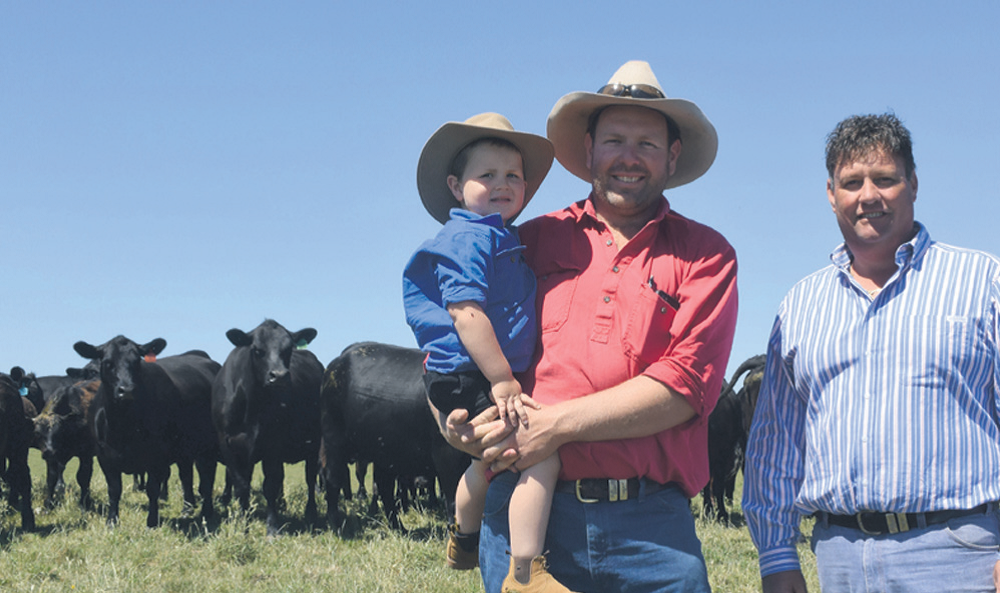By LAURA GRIFFIN, The Land, January 22, 2016
FIVE years into having Angus cattle on his property, John Bergamin is pleased with their performance.
The Bergamin family and staff had been running Hereford cattle, but made the change to include Angus in the mix in 2010.
They bought the top 90 heifers at a sale at Ballarat, Victoria, in 2010, and have since increased their Angus herd to now make up about half of the cattle run at Nanjomara”, Willow Grove, in Gippsland.
The other half of the herd are Herefords, and Mr Bergamin said both breeds had benefits and developed differently.
He said the decision to introduce Angus cattle was driven by great marketing and the resulting premium paid at many sales for the breed.
There are now a total of 500 Angus and Hereford breeders run on about 554 hectares.
Mr Bergamin said the family and farm manager Ben Cumming aimed to increase the herd to 650 breeders sustained by a pasture improvement program.
The cattle are strictly grass-fed, and only supplementary fed with hay and silage conserved on-farm.
Mr Bergamin said the Gippsland farm, with an average annual rainfall of 800 millimetres and with grey sandy loam soil, performed best when grazed heavily.
Their rotational grazing program has mobs of about 80 to 100 breeders that are moved according to visual assessments of the predominantly ryegrass and clover paddocks and weather conditions.
Generally, a summer fodder crop of millet is sown for the weaners and is part of their pasture improvement program.
An agronomist performs soil tests twice yearly to ensure the pastures and crops are growing as well as possible.
A strong emphasis is also put on genetic in both breeds.
The Angus are of Te Mania bloodlines and the Herefords are Mawarra and Yarram Park bloods.
“We use Te Mania bloodlines for their good fertility, low gestational lengths, ease of calving with great growth and milk figures,” Mr Bergamin said.
“We have found the EBVs are accurate and reflected in the herd.”
Three or four bulls are put out in each 100-cow herd for eight weeks, which Mr Bergamin said they had tightened to put pressure on fertility.
The females are pregnancy tested and Mr Bergamin said any empty animal, regardless of how good they were, was sold.
Calving starts at the end of February.
Weaning depends on the season and generally is undertaken between late December and late January.
Mr Bergamin said yard weaning the calves for up to 10 days produced easy-handling, quiet weaners.
Low-stress handling practices are used.
“We place a strong emphasis on fertility – empty cows and late calvers cost you money and are sold, we cull on temperament, structure, size, shape and style,” he said.
In the past, weaners off “Nanjomara” have been sold at Heyfield, Victoria, in March, but last year they sold them at Pakenham, Victoria, and would do so again at the end of February or early March.
Pictured – Farm manager, Ben Cumming, his son Jack, 3, and owner John Bergamin with some of the Angus cattle at “Nanjomara”, Willow Grove, in Gippsland, Victoria

